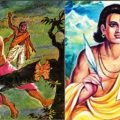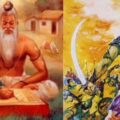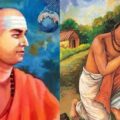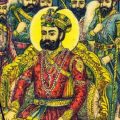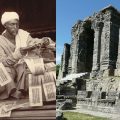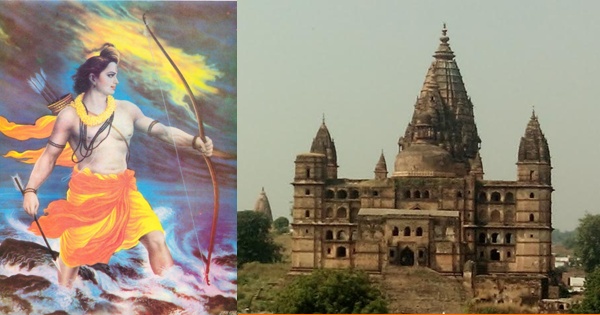Historicity of Navaratnas of Raja Vikramaditya: Kalidasa to Vetala Bhatta
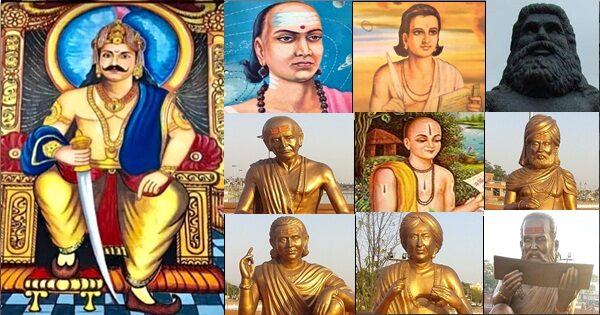
Eminent historians have not only questioned the historicity of King Vikramaditya but also rejected the contemporaneity of Navaratnas because their distorted chronological framework has no room for Vikramāditya. Moreover, they ridiculously date Kālidāsa before Varāhamihira though Kālidāsa himself refers to Varāhamihira as his senior contemporary in his treatise Jyotirvidābharaṇam. It is relevant here to discuss the date of Navaratnas because the historicity of King Vikramaditya is also linked with the contemporaneity of Navaratnas in the 1st century BCE.
According to Kālidāsa and the traditional legends, King Vikramāditya had nine gems in his court, namely, Varāhamihira, Kālidāsa, Vararuchi, Dhanvantari, Kśapaṇaka, Ghatakharpara, Śaṅku, Amarasimha and Vetālabhaṭṭa.
Dhanvantari-Kśapaṇakāmarsiṁha-Śaṅku-
Vetālabhaṭṭa-Ghaṭakarpara-Kālidāsāḥ ।
Khyāto Varāhamihiro nṛpateḥ sabhāyām
Ratnāni vai Vararuchir nava Vikramasya ॥27
Varāhamihira (146-74 BCE)
Varahamihira was the eldest among the Navaratnas of Vikramāditya as indicated by Kālidāsa (Varāhapūrvāḥ… Khyāto Varāhamihiro….). Varāhamihira, the son of Ādityadāsa and the most celebrated astronomer of Avanti (Ujjain), was born in Kāmpilyaka or Kāpitthaka. He was the author of Pañcasiddhāntikā, Bṛhajjātakam and Bṛhat Saṁhitā.
Varāhamihira used the expressions “Śakendra-kāla”, “Śaka-bhūpa-kāla”, “Śaka-kāla”, etc., which unambiguously refer to the Śaka era (583 BCE) and not to the Śakānta era (78 CE). He indicated Śaka 427 current (157 BCE) as Karaṇābda for calculation of Ahargaṇa (counting of days).
Saptāśvivedasaṅkhyam Śaka-kālamapāsya Chaitra-śuklādau ।
Ardhāstamite bhānau Yavanapure Saumyadivasādye ॥
“The 427th year from Śaka kāla, i.e. 583 BCE, when the sun is half setting at Yavanapura at the beginning of Chaitra śuklapakśa and it is the beginning of Wednesday.” Considering the epoch of Śaka era in 583 BCE, the year of Śaka 427 current was 157-156 BCE and the date intended by Varāhamihira was 21st Mar 157 BCE and the weekday was Wednesday.
Amarāja Daivajña, who wrote a commentary on “Khandakhādyaka” of Brahmagupta, mentions that Varāhamihira died in Śaka 509 (74 BCE) [Navādhika-pañca-śata-sankhya-śāke Varāhamihirācāryo divam gataḥ] when the trepidation (the oscillation in the precession of equinoxes) was nil. Thus, we can roughly fix the lifetime of Varāhamihira between Śaka 427 and Śaka 509, i.e., 157-74 BCE.
Interestingly, Varāhamihira mentions the points in the ecliptic, at which, winter and summer solstices occurred in ancient times and his
time (around 100 BCE).
Aśleṣārdhād-dakśiṇamuttaramayanam raverdhaniṣṭhādyām ।
Nūnam kadācidāsīd yenoktam pūrvaśāstreṣu ॥
Sāmpratamayanam savituḥ karkaṭakādyām mṛgāditaścānyāt ।
Uktabhavo vikṛtiḥ pratyakśa-parīkśaṇair-vyaktiḥ ॥29
“At the time the Sun’s southward course commenced on his reaching the middle of āśleṣā, and its northward course on his reaching the beginning of Dhaniṣṭhā. This must have been the case as we find it so recorded in ancient Śāstras (Vedāṅga Jyotiṣa). But at present the one course of the Sun commences at the beginning of Karkaṭaka (Cancer), and the other at the beginning of Makara (Capricorn).”
Aśleṣārdhād āsīd yadā nivṛttiḥ kiloṣṇakiraṇasya ।
Yuktamayanam tadāsīt sāmpratamayanam punarvasutaḥ ॥
“Once the Sun changed his course from the mid-point of Aśleṣā; but at present, the Ayana begins from the end of Punarvasu Nakśatra.” Based on the positions of solstices in the ecliptic given by Varahamihira as detailed above, it can be derived that Varāhamihira must have authored Bṛhat Saṁhitā and Pañcasiddhāntikā in the beginning of the 1st century BCE. There is a controversy about the translation of “Punarvasutaḥ”. V Thiruvenkatacharya says that Punarvasutaḥ can mean only from the end of Punarvasu. KV Sarma states that it can mean any point of Punarvasu and therefore, the point is three quarters of Punarvasu. Internal evidence suggests that Varāhamihira clearly indicates the specific point as Aśleṣārdhād (from the mid-point of Aśleṣā Nakśatra), Dhaniṣṭhādyām (the beginning of Dhaniṣṭhā Nakśatra), etc. Evidently, Varahamihira refers beginning point as Ādi and mid-point as Ardha.
Therefore, Punarvasutaḥ clearly indicates the end point of Punarvasu not the point of three quarters. Thus, the summer solstice at the end point of Punarvasu also indicates that Varahamihira lived around ~100 BCE.
A verse from a lost text named “Kutūhalamañjari” informs us that Varāhamihira was born in the 8th tithi of the bright half of Chaitra month, in Jaya saṁvatsara and the year 3042 of Yudhiṣṭhira era. The era of the son of Sūrya-Sūnu is identical with the epoch of 3188 BCE when Yudhiṣṭhira ascended the throne of Indraprastha. Thus, the year 3042 was 146 BCE which was also the Jaya saṁvatsara. Since Varāhamihira died in 74 BCE, Jaya saṁvatsara of 146 BCE was indeed his birth year. He was born on Chaitra Śukla Aṣṭamī, i.e., 25/26 Mar 146 BCE. Thus, we can accurately fix the lifetime of Varāhamihira around 146-74 BCE.
One more argument is given that Varāhamihira mentions Āryabhaṭa (Lankārdharātra-samaye dina-pravṛttim jagāda cāryabhaṭaḥ) who was born in the 5th century CE.31 Therefore, Varāhamihira cannot be dated around 146-74 BCE. Historians have wrongly interpreted the verse “Ṣaṣṭyabdānām Ṣaṣṭir yadā vyatītāḥ trayaśca yugapādāḥ” and concluded that Āryabhaṭa was born 3600 years after the epoch of the Kaliyuga (3102 BCE).32 The internal evidence suggests that Aryabhata was completely ignorant of the Śaka era. All Indian astronomers who lived after the epoch of the Śaka era have invariably referred to the Śaka era in their treatises.
Therefore, Āryabhaṭa cannot be dated after the epoch of the Śaka era (583 BCE). Thus, Āryabhaṭa lived much earlier than the time of Varāhamihira. I have already discussed in detail the date of Āryabhaṭa in my book titled “The Chronology of India : From Manu to Mahabharata”. In fact, Āryabhaṭa flourished around 3173-3100 BCE.
As discussed above, King Vikramaditya was born in 101 BCE and ascended the throne in 82 BCE. Possibly, Varāhamihira was in the court of Vikramāditya around 82-74 BCE.
Kālidāsa (105-25 BCE)
The most celebrated Sanskrit poet, Kalidasa was one of the Navaratnas of King Vikramāditya and the author of three Kāvyas (“Ritusaṁhāram”, “Kumārasaṁbhavam”, “Raghuvaṁśam) and four Nāṭakas (“Abhijñānaśākuntalam”, “Mālavikāgnimitram”, “Vikramorvaśīyam”, “Kuntaleśvaradautyam”). Kālidāsa also authored an astronomical work named “Jyotirvidābharaṇam” in Kaliyuga 3068 (34-33 BCE).
Varṣaiḥ sindhuradarśanāmbaraguṇair-yāte kalau saṁmite,
Māse Mādhava-saṁjñake ca vihito grantha-kriyopakramaḥ ।
Nānā-kāla-vidhāna-śāstra-gadita-jñānam vilokyādarād,
Ūrje grantha-samāptiratra vihitā jyotirvidām prītaye ॥
Kālidāsa states that “I began to write this work (Jyotirvidābharaṇam) in the Kali year 3068 and in the month of Mādhava (Vaiśākha). Having consulted treatises on several systems of astronomy, I have completed the work in the month of Ūrja (Kārttika)”. Thus, Kālidāsa started writing Jyotividābharaṇam on 10th Apr 34 BCE and completed it by 1st Nov 34 BCE.
Kalidasa claims that he was one of the Navaratnas of King Vikramaditya and a junior contemporary of Varāhamihira. Kālidāsa referred to Śaka 445 elapsed (20th Mar 138 BCE) as Karaṇābda in his work (Śarāmbodhiyugo nīto hṛto mānam…….. ayanam Śakasya) for calculation of “Ahargaṇa” (counting of days).
Kālidāsa calls himself as “nṛpasakhā” which indicates that he belonged to the same age group of King Vikramāditya.
“Śaṅkvādi-panditavarāh kavayastvaneke
Jyotirvidaśca prabhavaṅśca Varāhapurvāḥ।
Śri-Vikramārka-nṛpa-samsadi mānyabuddhiḥ
tairapyaham nṛpasakhā kila Kālidāsaḥ॥”
Vikramāditya fought the Śakas in the North-western region and defeated a Śaka king of the province “Rummakeśa” as recorded in Kālidāsa’s Jyotirvidābharaṇam.
“Yo Rummakeśādhipatim Śakeśvaram
jitvā gṛhito’jjayinim mahāhave।
Aniya sambhrāmya mumoca tam tvaho
Śri-Vikramārka-samasahyavikramaḥ ॥”
Al Beruni also mentions that Vikramaditya marched against a Śaka king and killed him in the region of Karur, between Multan and the castle of Loni. The war between Vikramāditya and the Śaka king ought to have taken place around 57 BCE.
King Vikramāditya established a vast kingdom in Central and Northern India. According to Kālidāsa’s Jyotirvidābharaṇam, Vikramāditya II conquered Draviḍa, Lāta, Vaṅga, Gauḍa, Gurjara, Dhārā and Kāmboja. Undoubtedly, Vikramāditya II also known as Harṣadeva was a contemporary of the early Chālukya King Pulakeśin II. Considering the epoch of the Śaka era in 583 BCE, Pulakeśin II reigned in the 1st century BCE. Vikramāditya II lost control over Draviḍa (Andhra and Chola kingdom) during the conflict between him and Pulakeśin II. Pulakeśin II claimed victory over Harsha, the lord of Uttarāpatha, in his copper plate grants. Undoubtedly, the “Harsha”, “Sri Harsha”, “Harshavardhana”, etc., mentioned in the early Chālukya grants were none other than Vikramāditya II and the war between Harṣa (Vikramāditya II) and Pulakeśin II occurred prior to 53 BCE. Vikramāditya II sent Kālidāsa as his emissary to the court of Kuntaleśvara, i.e., Pulakeśin II after his defeat. Kālidāsa beautifully narrates his experience as emissary in his work “Kuntaleśvaradautyam” which is unfortunately now lost. Historians have concocted that Pulakeśin II was a contemporary of the Puṣpabhūti King Harshavardhana of Kanauj but he flourished around 457-405 BCE. We will discuss the epoch of Sri Harsha era in Chapter 6.
Kśemendra, the author of “Aucityavicāracarcā”, quotes a verse from Kālidāsa’s Kuntaleśvaradautyam as an illustration of Adhikaraṇaucitya (propriety of place): Kālidāsa was sent as the ambassador of King Vikramaditya to the court of the king of Kuntala, i.e. the early Chālukya King Pulakeśin II (52-22 BCE) where he did not get a seat worthy of an ambassador of a great king like Vikramāditya, and therefore, sat on the ground. When asked why he did so, Kālidāsa recited the following verse:
Iha nivasati meruḥ śekharaḥ kśmādharāṇām,
iha vinihitabhāraḥ sāgaraḥ sapta cānye ।
idam mahipatibhoga-sthambhavibhrājamānām,
dharaṇitalamihaiva sthānamasmadvidhānām ॥
“This is the only proper seat for us, which is rendered immovable by the numerous pillar-lik hoods of the Śeṣa Nāga (lord of serpents); since it is here that Meru, the lord of mountains and also the seven seas are seated. And I am in no way inferior to them.”
Śriṅgāraprakāśa of King Bhoja also quotes from Kālidāsa’s Kuntaleśvaradautyam from which it is quite clear that Kālidāsa’s visit to the court of Chālukya King Pulakeśin II was eventful. Ravikīrti, the author of the Aihole inscription of Śaka 556 (27 BCE), proudly mentions the names of Kālidāsa and Bhāravi. It can be concluded from the above that Kālidāsa was the court poet of the Ujjain King Vikramāditya and flourished in the 1st century BCE.
Historians mistakenly identify the Gupta King Chandragupta Vikramāditya as the patron of Kālidāsa. Vākāṭaka King Pravarasena II, the son of the daughter of Chandragupta II, wrote a Kāvya “Setubandha” in Prakrit which had been revised or re-composed in Sanskrit by Kālidāsa by the order of King Vikramaditya as stated by the commentator Rāmadāsa.
Chandragupta II, the maternal grandfather of Pravarasena II, died at least a few years before the Setubandha could have been written. Kālidāsa, who refers to himself as “nṛpasakhā” which meant the same age group friend of Vikramāditya, may have also died by then. Therefore, Chandragupta II was not the Vikramāditya who patronised Kālidāsa. We will discuss the chronology of the Gupta and the Vakataka dynasties in Chapter 9. Evidently, the famous Sanskrit poet Kālidāsa was in the court of King Vikramaditya of the 1st century BCE and lived around 105-25 BCE.
Vararuchi (100-20 BCE)
Vararuchi was also in the court of Vikramāditya. He himself records that he authored “Patrakaumudī” by the directions of Vikramāditya.
Vikramāditya-bhūpasya Kīrti-siddhernideśataḥ ।
Śriman Vararuchirdhīmān tanoti Patrakaumudīm ॥
Vararuchi also authored “Liṅgaviśeṣavidhi” and “Vidyāsundaraprasaṅga-kāvyam” (Vararuchināmā sa kaviḥ śrutvā vākyam nṛpendrasya । Vidyāsundara-charitam ślokasamuhaistadārebhe ॥).
There were many famous scholars named Vararuchi existed in ancient India starting from Vararuchi Kātyāyana, a contemporary of Pāṇiṇi (1670-1590 BCE).
Dhanvantari (1st century BCE)
Dhanvantari, the author of Nighanṭu and Dravyāvalī was one of the nine gems of King Vikramaditya. Probably, he was a royal physician. Unfortunately, we have no further information of Dhanvantari of the 1st century BCE.
Kśapaṇaka (1st century BCE)
There were two Sanskrit poets named Ksapaṇaka and Mahā-Kśapaṇaka. Kśapaṇaka was a great grammarian who wrote a treatise titled “Mahānyāsa”. His treatise was known as “Kśapaṇaka-Vyākaraṇa”. Mahākśapaṇaka was the author of “Anekārtha-Dhvani-Mañjarī” (also known as “Nānārtha-Dhvani-Mañjarī”).
Seemingly, he belonged to Kashmir as recorded at the end of two chapters of Anekārtha-Dhvani-Mañjarī (Kashmirānvaye Mahā-Kśapaṇaka-kavi-viracitānekārtha- Dhvani-Mañjaryām slokādhikāraḥ). There is only one śloka available in Sanskrit literature, which is attributed to Kśapaṇaka. Evidently, there was a grammarian and poet named Kśapaṇaka indeed existed.
Kālidāsa informs us that Ksapaṇaka was also one of the nine gems of King Vikramāditya of the 1st century BCE. Probably, Kśapaṇaka and Mahākśapaṇaka were two different persons.
Amarasimha (85-0 BCE)
Amarasimha was the famous author of “Amarakośa” also known as “Nāmaliṅgānuśāsanam”. Most probably, he was a Buddhist. An inscription found at Bodh Gaya mentions Amarasimha, a gem of the court of King Vikramaditya. Most probably, Amarasimha was younger than Vararuchi and Dhanvantari. According to Kśīraswāmi and Sarvananda, the commentators of Amarakośa, the treatises like Vyādi’s Utpalini, Kātyāyana’s Kātya-kośa, Vachaspati’s Śabdārṇava, Bhāguri’s Trikānḍakośa, Vikramāditya’s Saṁsārāvarta, Dhanvantari’s Nighanṭu, Amaradatta’s Amaramālā and Vararuchi’s Liṅgaviśeṣavidhi were written before Amarasimha’s Nāmaliṅgānuśāsanam.
Śaṅku (1st century BCE)
Sanku was also one of the Navaratnas of King Vikramaditya. Unfortunately, we have no information about this great scholar. Some scholars have mistakenly identified the Kashmiri poet Śaṅkuka to be one of the Navaratnas of King Vikramāditya. Kalhaṇa tells us that Śaṅkuka was the author of “Bhuvanābhyudayam”. He was a contemporary of Kashmir King Ajitāpīda and a younger contemporary of Bhaṭṭa Lollaṭa.
According to legends, Śaṅkuka was the son of Mayūra. It may be noted that Mayūrabhaṭṭa, the author of Sūryaśatakam and the brother-in-law or son-in-law of Bāṇabhaṭṭa belonged to Bihar whereas Mayūra, the father of Śaṅkuka belonged to Kashmir. Śaṅkuka was also the author of a commentary on Bharata’s Nāṭyaśāstra as quoted by Abhinavagupta.
We will discuss the date of Śaṅkuka with reference to the chronology of Kashmir. Evidently, Śaṅkuka cannot be dated in the 1st century BCE. Moreover, neither Mammaṭa nor Kalhaṇa referred to Śaṅkuka as one of the Navaratnas of Vikramaditya.
Vetāla Bhaṭṭa (1st century BCE)
It is believed that Vetala Bhaṭṭa was the author of “Vetālapañcavimśatikā” but the original source of this text is Guṇāḍhya’s Bṛhatkathā. Presently, the versions of Vetālapañcavimśatikā edited by Jambhalabhaṭṭa, Vallabhadāsa and Śivadāsa are available. Vetala Bhaṭṭa was also the author of Nītipradīpa Kāvya.
A fragmentary manuscript of Nītipradīpa Kāvya is available which contains only 16 verses. This manuscript clearly mentions Vetāla Bhaṭṭa as the author (Iti Śri-Mahākavi-Vetālabhaṭṭa-viracitam Nītipradīpakāvyam
samāptam). Evidently, Vetāla Bhatta, a great poet, was one of the Navaratnas of King Vikramaditya.
Ghaṭakharpara (1st century BCE)
Ghaṭakharpara was the author of Nītisāra and Ghaṭakharpara-Kāvyam. There are eight commentaries on Ghaṭakharpara-Kāvyam. Abhinavagupta wrote a commentary named “Kulaka-Vṛtti” on Ghaṭakharpara-Kāvyam.
Seemingly, Ghaṭakharpara was his nickname but we have no information about his original name. In fact, he posed a challenge that if any poet defeats him in “Yamaka”, he will fill water for him with a Ghaṭa-Kharpara, i.e., a broken pot. This is how he came to be known as “Ghaṭakharpara”.
Featured image courtesy: Compilation of images from Google and Wikimedia.
The above article is an exact extract from the book Chronology of India: From Mahabharata to Medieval Era by Vedveer Arya.
Vedveer Arya
Latest posts by Vedveer Arya (see all)
- How Salaries Were Paid to Temple Staff in Early Medieval Bharat - October 23, 2024
- A Genealogical Account of Bhrigu Gotra from Saptarshis - October 23, 2024
- Saptarshis: Lineages of Angirasa gotra from 14050 BCE - October 23, 2024

